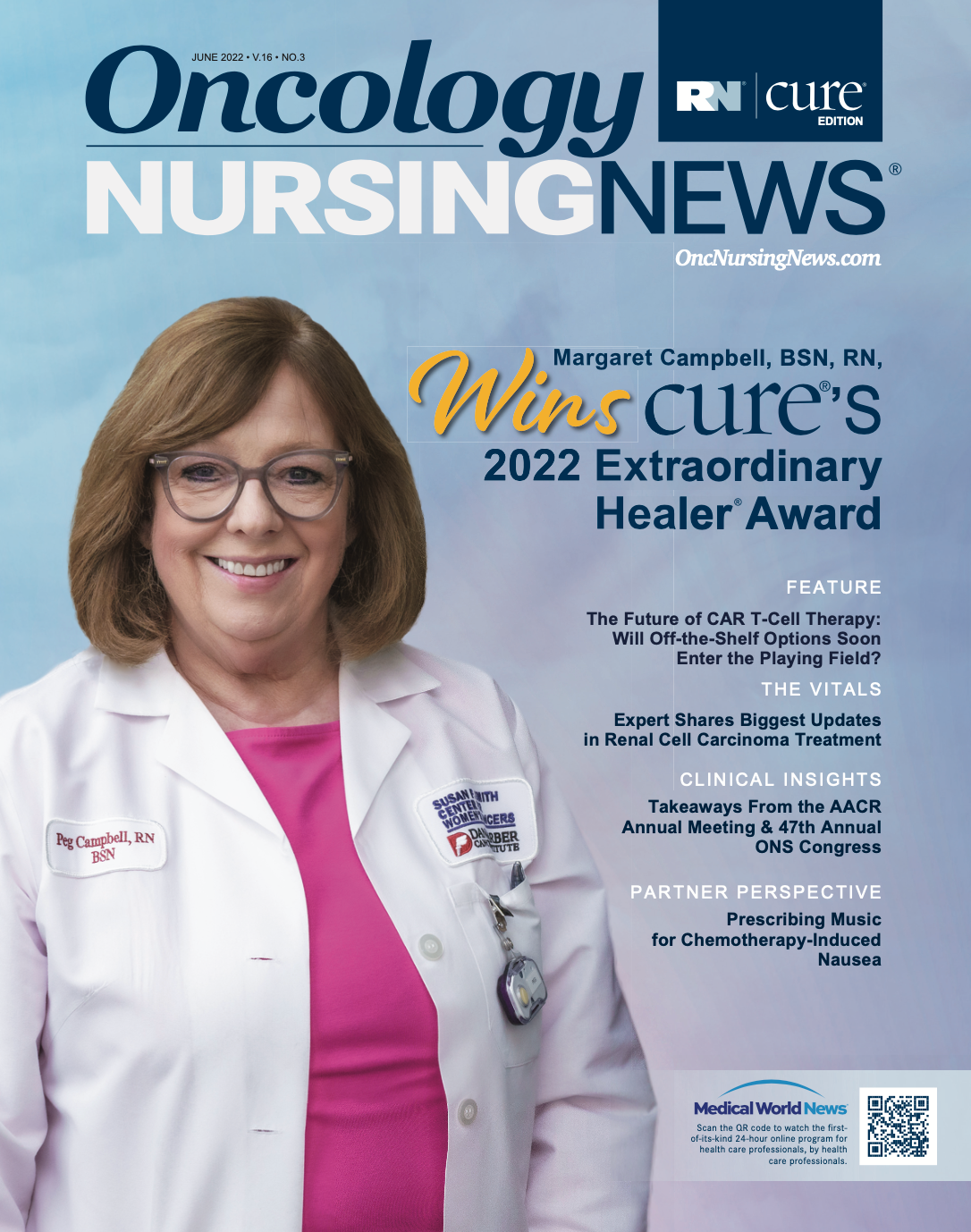Does the CDC’s Proposed Opioid Prescribing Guideline Fall Short on Drug Testing?
Although the CDC has put forth a strong effort to improve its opioid guidelines, many providers still feel that more can be done.
Jack Kain, PharmD

In February 2022, the CDC shared a draft update to its Clinical Practice Guideline for Prescribing Opioids. The CDC’s guidance, last issued in 2016, intends to guide clinicians in safely, effectively prescribing opioids for acute, subacute, and chronic pain.
Notably, the proposed revision comes as the nation’s overdose death rate reaches an all-time high,1 fueled largely by the economic and psychological strains and lack of health care access caused by COVID-19. Some research shows the previous guideline may have led to the undertreatment of patients with chronic pain.2 For years, experts argued that limits on dosages prevented patients from accessing critical pain management tools; some speculate that patients even turned to illicit opioids when they were unable to access a prescribed opioid for legitimate pain.3
The CDC’s proposed revision aims to address these critiques and other concerns arising from the 2016 guideline. Much of what is outlined in the new guideline will hopefully create better outcomes for patients with chronic pain. Still, questions remain surrounding whether the changes are drastic enough to reduce risks and optimize care related to opioid therapy. Many are particularly curious to see how the guidelines will relate to diagnostic drug testing, an essential but underutilized tool for promoting the safe, medically appropriate use of prescribed opioids and other controlled substances.
Quest Diagnostics recently surveyed over 500 physicians in coordination with The Harris Poll to uncover attitudes about the rising drug overdose crisis and the role of clinical drug testing in safely prescribing opioids. A key theme emerged from the findings: Physicians believe clinical drug testing is critical for managing opioids and other prescribed controlled medications, but feel clearer guidelines are needed to help optimize opioid use. Most (85%) physicians surveyed expressed confidence that testing aids in prescribing safely, and a similar majority (88%) believe better guidelines would help ensure testing is used equitably.4
Here, the CDC’s proposed changes could go further. In an apparent attempt to address concerns around drug testing costs and “patient firing” due to a positive test result, the proposed guidance offers vague details on the role, frequency, and methods of testing that should be employed by clinicians. It also underplays the essential value of definitive laboratory testing in monitoring for opioid use, including with nonprescribed fentanyl, even though these substances are responsible for most overdose deaths.5
Clinical drug testing is the only objective source of insight into a patient’s drug use behaviors. Although physicians may wish to rely on a patient’s self-report, 48% of drug monitoring test results performed by Quest Diagnostics in 2020 were inconsistent with medications prescribed6—a statistic that may have worsened in 2021 when the COVID-19 Delta and Omicron variant surges likely limited in-person patient care and therefore testing.
Given these data, among the chief concerns within the CDC’s proposed guideline revisions is its statement that clinicians should “consider” utilizing toxicology testing, and only “periodically.” The CDC must go further in clarifying when and how clinicians should utilize clinical toxicology drug testing to help ensure the responsible, effective use of prescribed opioids and other controlled medications. Based on my experience, to provide the insights that physicians need, toxicology testing should be performed at baseline and periodically based on individual patient factors (and no less than at least once annually). Indeed, 88% of physicians surveyed say prescription drug monitoring is critical to helping identify patients who may be misusing prescription drugs, and 92% believe prescription drug monitoring will increasingly become the standard of care when prescribing controlled substances.7
In addition, the use of clinical drug testing in chronic opioid therapy is recommended uniformly by medical guidelines, including from the American Pain Society, American Academy of Pain Medicine, American Society of Interventional Pain Physicians, American Association for Clinical Chemistry (AACC), and the Federation of State Medical Boards. In fact, current clinical practice guidelines from AACC recommend that, in addition to baseline drug testing, testing should be performed throughout the year for patients prescribed controlled substances.8
Another concern comes from statements in the proposed guideline about the need to minimize the use of definitive testing to limit costs. Although reducing costs of toxicology testing is a worthwhile goal, and not all patients will require a definitive test, clinical drug testing fits into a larger landscape of costs, from treatment for substance use disorders to emergency department visits for overdose—some of which toxicology testing may help avert. The estimated economic costs of the US opioid epidemic, due to health care expenses, criminal justice, lost productivity, and reduced quality of life, topped $1 trillion in 2017.9
Though presumptive point-of-care tests are an important tool for clinicians, they are often less sensitive and can miss drugs that definitive lab tests will detect. Recent data show point-ofcare presumptive urine tests may miss about 74% of specimens with fentanyl, as determined by sensitive definitive laboratory tests. These same point-of-care tests were also shown to have missed large percentages of other drugs, including marijuana, amphetamine, methamphetamine, oxycodone, and cocaine.10 Yet, presumptive tests still have an important role to play, such as for low-risk patients.
For these reasons, the final guideline should recognize the need for presumptive testing followed by definitive testing on the same specimen for specific indications, such as to confirm the presence of specific drugs being prescribed or to confirm any unexpected positive findings on presumptive screen that do not match the patient’s accounting of medication/drug use.
Although the CDC has put forth a strong effort to improve its guideline, more can be done. The final guideline should place greater emphasis on the importance of testing and clarify when and how it should be used. Data shows these pieces cannot go ignored and are vital to curbing our nation’s growing overdose death epidemic.
Jack Kain, PharmD, is director and medical science liaison for prescription drug monitoring and toxicology at Quest Diagnostics.
References
- Ahmad FB, Rossen LM, Sutton P. Provisional drug overdose death counts. National Center for Health Statistics. Update April 13, 2022. Accessed April 8, 2022. https://bit.ly/3rbeDnM
- Rich RLC Jr. Prescribing opioids for chronic pain: unintended consequences of the 2016 CDC guideline. Am Fam Physician. 2020;101(8):458-459.
- Joseph A. In a victory for pain experts, CDC tones down its opioid prescribing guidelines. STAT. February 10, 2022. Accessed April 8, 2022. https://bit.ly/3O103Jk
- Health Trends: drug misuse in America 2021—physician perspectives and diagnostic insights on the drug crisis and COVID-19. Quest Diagnostics. November 2021. Accessed April 8, 2022. https://bit.ly/3LMtFbe
- Cohen J. Updated CDC prescription opioid guidelines appear more flexible and patient-centric, but fall short. Forbes. March 4, 2022. Accessed April 8, 2022. https://bit.ly/3LP4WTF
- Niles JK, Gudin J, Radcliff J, Kaufman HW. The opioid epidemic within the COVID-19 pandemic: drug testing in 2020. Popul Health Manag. 2021;24(S1):S43-S51. doi:10.1089/pop.2020.0230
- Majority of physicians fear another prescription drug crisis, finds new Quest Diagnostics Health Trends report. News release. Quest Diagnostics. October 16, 2019. Accessed April 8, 2022. https://bit.ly/3JmTugo
- Jannetto PJ, Bratanow NC, Clark WA, et al. Executive summary: American Association of Clinical Chemistry laboratory medicine practice guideline-using clinical laboratory tests to monitor drug therapy in pain management patients. J Appl Lab Med. 2018;2(4):489-526. doi:10.1373/jalm.2017.023341
- Kuehn BM. Massive costs of the US opioid epidemic in lives and dollars. JAMA. 2021;325(20):2040. doi:10.1001/jama.2021.7464
- Gudin J, Kain J, Edinboro L, Hilborne L. Presumptive versus definitive drug testing: what are we missing? Poster presented at: PAINWeek Conference; September 7-11, 2022; Las Vegas, NV.




